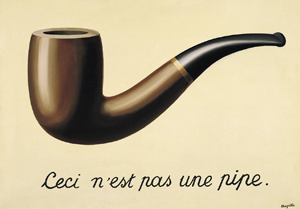Introduction
Extract from Daniel Chandler’s Guide to Semiotics for Beginners (undergraduates):

If you go into a bookshop and ask them where to find a book on semiotics you are likely to meet with a blank look.
Even worse, you might be asked to define what semiotics is - which would be a bit tricky if you were looking for a beginner’s guide.
It’s worse still if you do know a bit about semiotics, because it can be hard to offer a simple definition which is of much use in the bookshop. If you’ve ever been in such a situation, you’ll probably agree that it’s wise not to ask. Semiotics could be anywhere.
The shortest definition is that it is the study of signs. But that doesn’t leave enquirers much wiser. ‘What do you mean by a sign?’ people usually ask next.
The kinds of signs that are likely to spring immediately to mind are those which we routinely refer to as ‘signs’ in everyday life, such as road signs, pub signs and star signs. If you were to agree with them that semiotics can include the study of all these and more, people will probably assume that semiotics is about ‘visual signs’.
You would confirm their hunch if you said that signs can also be drawings, paintings and photographs, and by now they’d be keen to direct you to the art and photography sections. But if you are thick-skinned and tell them that it also includes words, sounds and ‘body language’ they may reasonably wonder what all these things have in common and how anyone could possibly study such disparate phenomena. If you get this far they’ve probably already ‘read the signs’ which suggest that you are either eccentric or insane and communication may have ceased.
Assuming that you are not one of those annoying people who keeps everyone waiting with your awkward question, if you are searching for books on semiotics you could do worse than by starting off in the linguistics section.
Click on the link below to access the rest of the article and a very comprehensive section on Semiotics.
Link: Semiotic for Beginners by Daniel Chandler at Aberystwyth University
Resource: ‘A Dictionary of Media and Communication’ (Oxford Paperback Reference) by Daniel Chandler and Rod Munday